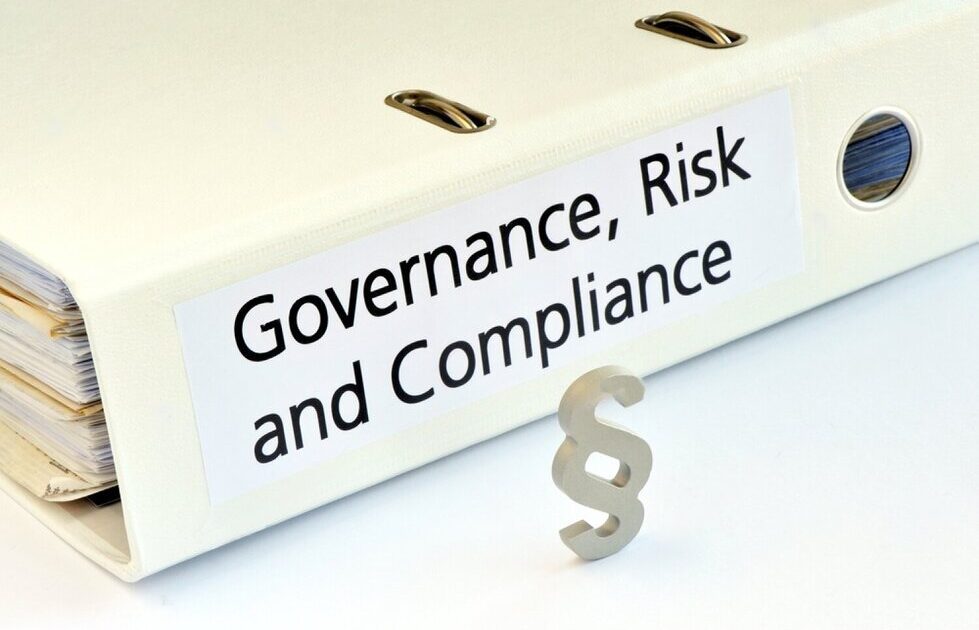Understanding Governance and Compliance Risks

In a constantly changing business environment, organizations face numerous challenges when it comes to governance and compliance. Generally, risk is the possibility that an outcome will not be as expected. Risks are inherent in every facet of life, from public health crises, climate change and environmental challenges to financial crisis and cybersecurity threats. Effective risk governance ensures that potential threats are identified, analyzed, and managed actively.
This article aims to shed light on the critical governance and compliance risks that organizations encounter. By understanding these risks, businesses can proactively implement measures to mitigate potential harm and ensure long-term success.
Governance and compliance risks refer to the risks that an organization faces when it fails to comply with laws and regulations or when it fails to follow its own internal policies and procedures. Governance, Risk and Compliance (GRC) is a strategy that integrates the following three components: corporate governance, risk management, and regulatory compliance.
Identifying and understanding risks is the first step in effective risk governance. This involves scanning the internal and external environment, engaging with stakeholders, and conducting risk assessments to identify potential threats and their potential impact. Some common governance risks include:
i. Strategic risks
Poor strategic decision-making can lead to missed opportunities, competitive disadvantages, and financial losses. Strategic risks may involve inadequate market research, failure to adapt to changing market conditions, lack of innovation, and overreliance on a single product or market. In the age of digital transformation, the failure to appropriately adopt technology is a major strategic risk.
ii. Weak Internal Controls
Weak internal controls can lead to governance and compliance risks. Inadequate oversight, lack of separation of duties, unclear communication and reporting lines and ineffective monitoring mechanisms can create opportunities for fraud, financial misappropriation, and unethical behavior. Organizations must establish strong internal control systems that encompass clear policies, procedures, and regular audits to detect and prevent potential compliance breaches. Transparency and accountability should be ingrained in the organizational culture to mitigate risks and ensure adherence to ethical standards.
iii. Increasing Regulatory Complexity
The regulatory landscape continues to grow in complexity, affecting organizations across various industries. Businesses must navigate through an intricate web of laws, regulations, and international standards. Compliance with these regulations often requires substantial resources and failure to comply not only exposes organizations to legal risks but also undermines their reputation. Implementing a comprehensive compliance framework that monitors and adapts to regulatory changes is essential to avoid legal penalties, financial forfeiture and maintain compliance.
iv. Evolving Social and Environmental Expectations
Societal expectations regarding corporate social responsibility and environmental sustainability have surged in recent years. Organizations must align their practices with evolving societal values to avoid regulatory scrutiny, loss of market share and reputational damage. Adopting sustainable business practices, engaging in transparent reporting, and implementing responsible governance structures can help organizations navigate these risks effectively.
v. Cybersecurity Threats
In today’s digital age, organizations face unprecedented cybersecurity risks. With the rise in sophisticated cyber-attacks, protecting sensitive data and ensuring data privacy has become a top priority. Failure to establish robust cybersecurity measures can result in data breaches, unauthorized access, and potential disruption of business operations. Compliance with data protection laws and regulations is crucial to safeguard customer data and maintain regulatory compliance. Regular risk assessments, employee training, and implementing robust security protocols are necessary to address these threats effectively.
Governance and compliance risks are pervasive necessitating a careful approach to risk management. Organizations must develop a comprehensive understanding of these risks and implement robust measures to mitigate them effectively.
